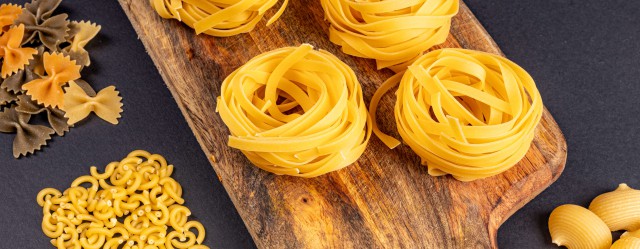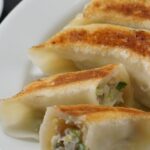
On January 30, 2024, at the Third Fiscal 2023 Food Labeling Discussion Meeting the revision of the labeling rules set for individual food items was discussed. A useful material has been provided as an easy-to-understand summary of the current issues titled [Reference] Labeling Rules for Individual Items and I would like to go through it here.
Overview
- While some food items have their own individual rules (aside from cross-sectional labeling rules applied to all food items), others do not.
- For the food items with their own individual rules, their individual rules take precedence over the cross-sectional labeling rules.
Appended Table 3 Standards of Identity
Appended Table 4 Individual Labeling Rules (Legal name, Ingredient name, Additives, Net weight)
Appended Table 5 Rules for Legal names
Appended Table 19 Additional Labeling items (Precautions for Use, Cooking Method, Shape/form, Content rate of Specific Ingredients, etc.)
Appended Table 20 Labeling style
Appended Table 22 Prohibited labeling items
For example, according to the provisions of “Macaroni” in the Appended Table 4 of the Food Labeling Standards, the names that can be labeled differ depending on their shape/form, size, and thickness.
Examples of differences in labeling
Even if products look similar, the “legal name” for them can differ depending on the product form.
For example, in fettuccine,
-“Dried” fettuccine must be labeled as “名称:マカロニ類” (EN: Legal name: Macaronis) according to the individual rule for “Macaronis” of dried noodle
-“Frozen” fettuccine must be labeled as “名称:フェットチーネ等” (EN: Legal name:fettuccines) according to the individual rule for “prepared frozen food” of frozen food
-“Fresh” fettuccine must be labeled as “名称:フェットチーネ等” (EN: Legal name:fettuccines) according to the cross-sectional rules because there are no individual rules for “fresh” fettuccine
Even for products using the same ingredients, the “Legal name” can be different depending on the container and packaging of the product.
For example, in the case of Japanese-styled meat sauce:
-If a product is packaged in a retort pouch (with light shielding), it must be labeled as “名称:ミートソース” (EN: Legal name: Meat Sauce) according to the individual rules for retort pouch foods
-If a product is packaged in a transparent pouch (without light shielding), it must be labeled as “名称:和風パスタソース” (EN: Legal name: Japanese-style Pasta Sauce) according to the cross-sectional rules as it does not meet the identity for retort pouch food.
Furthermore, there the cases where labeling methods differ depending on the storage temperature and distribution method of a product.
For example,
-“Frozen” gyoza (dumpling)- categorized as “prepared frozen food”
It must be labeled according to its individual rules (Firstly, compare the weight of “the ingredients excluding the skin (wrapper)” and “the skin”. Then, list both in descending order by weight, including the breakdowns of each, also in descending order by weight).
-“Chilled” gyoza- categorized as “chilled gyoza”
It must be labeled according to its individual rules (First compare the weight of (i) meat, (ii) fish meat, (iii) vegetables, (iv) filler, (v) skin, and (vi) other ingredients. Then indicate them in descending order by weight, including the breakdowns of each).
-Gyoza other than the above two categories such as those of which storage methods are “refrigerated”, “room temperature” It must be labeled according to the cross-sectional rules (simply list all the ingredients in descending order, including the breakdowns of each) because there are no individual rules.
These regulations were originally established under the former JAS Act and were later transferred to the Cabinet Office Ordinance on Food Labeling. There are remaining issues (with the current systems) that are to be considered by officials, in regards to rational choices of food products by consumers and the burden on business operators.
Further meetings will follow and focus on the discussion on establishing cross-sectional rules to achieve maximum possible unification while ensuring alignment with international standards, based on the process and backgrounds of labeling rules for individual food items. We will keep an eye on the specific labeling methods for each food item in the future (and inform you accordingly). During the meeting, other topics were also discussed. Among them it was reconfirmed that additives for nutritional fortification purposes should be labeled on all processed foods in principle. The proposed revision and its timing will be clarified in future meetings.
Share/Like/Follow:
Newsletter Signup
We issue monthly e-newsletters, which provide you with the latest updates on food labeling/regulations in Japan.
If you want to make sure to not miss any issue, please click below.
Related Service
Research Services on Ingredients & Food Labeling -For the Japanese Market-
We verify the conformity of ingredients and additives with the standards for use in Japan based on specifications such as formulation lists. We also verify the conformity of the proposed labeling of ingredient names, nutrients, etc. with the labeling standards based on specifications such as formulation lists.

Label bank Co., Ltd. CEO (Founder)
Born in Japan. Working on solving various issues related to food labeling operations. Also regularly gives lectures for various organizations in Japan.
Co-author of ‘Latest edition: Guide book Food Labeling Law and related business practical points – from scratch (Japanese version only)’ (DAI-ICHI HOKI CO., LTD/2019).






